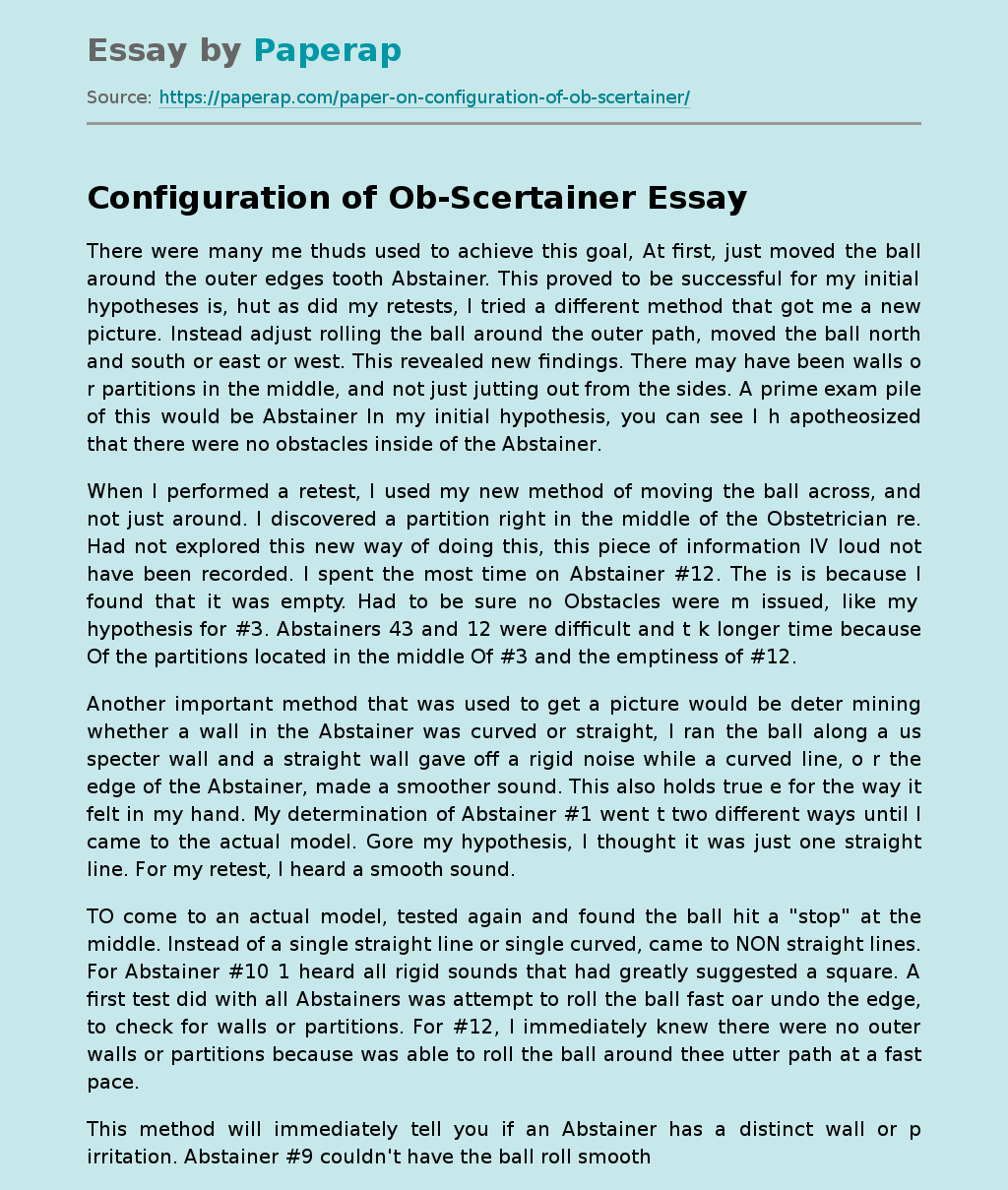Configuration of Ob-Scertainer
There were many me thuds used to achieve this goal, At first, just moved the ball around the outer edges tooth Abstainer. This proved to be successful for my initial hypotheses is, hut as did my retests, I tried a different method that got me a new picture. Instead adjust rolling the ball around the outer path, moved the ball north and south or east or west. This revealed new findings. There may have been walls o r partitions in the middle, and not just jutting out from the sides.
A prime exam pile of this would be Abstainer In my initial hypothesis, you can see I h apotheosized that there were no obstacles inside of the Abstainer.
When I performed a retest, I used my new method of moving the ball across, and not just around. I discovered a partition right in the middle of the Obstetrician re. Had not explored this new way of doing this, this piece of information IV loud not have been recorded.
I spent the most time on Abstainer #12. The is is because I found that it was empty. Had to be sure no Obstacles were m issued, like my hypothesis for #3. Abstainers 43 and 12 were difficult and t k longer time because Of the partitions located in the middle Of #3 and the emptiness of #12.
Another important method that was used to get a picture would be deter mining whether a wall in the Abstainer was curved or straight, I ran the ball along a us specter wall and a straight wall gave off a rigid noise while a curved line, o r the edge of the Abstainer, made a smoother sound.
This also holds true e for the way it felt in my hand. My determination of Abstainer #1 went t two different ways until I came to the actual model. Gore my hypothesis, I thought it was just one straight line. For my retest, I heard a smooth sound.
TO come to an actual model, tested again and found the ball hit a “stop” at the middle. Instead of a single straight line or single curved, came to NON straight lines. For Abstainer #10 1 heard all rigid sounds that had greatly suggested a square. A first test did with all Abstainers was attempt to roll the ball fast oar undo the edge, to check for walls or partitions. For #12, I immediately knew there were no outer walls or partitions because was able to roll the ball around thee utter path at a fast pace.
This method will immediately tell you if an Abstainer has a distinct wall or p irritation. Abstainer #9 couldn’t have the ball roll smooth y because it had small walls jutting out from the walls of the Abstainer. I also spent much time on Abstainer It got difficult when you had a shape, not just a wall, coming out from the side. I had to be precise to get a n accurate reading, In my hypothesis, knew there was a shape in the Obscener inner, but it was a general reading, which only got me a standard shape. When tested again, I was very careful to get a more precise reading. Covered the Geiger was rigid but also found a little partition across from it. For Bobs certain #8, knew there was a definite partition. For my initial hypothesis, suspected it consisted of a single curved line and a single straight one. For m retests, studied it longer to find it consisted Of three straight lines. In my r tests of all the Abstainers, was able to study it longer, leading to more accurate readings. Sounds and feelings were more distinct after first predict ions. After developing new methods after series of hypotheses, the insides of Abstainers became clearer.
Configuration of Ob-Scertainer. (2018, May 26). Retrieved from https://paperap.com/paper-on-configuration-of-ob-scertainer/

